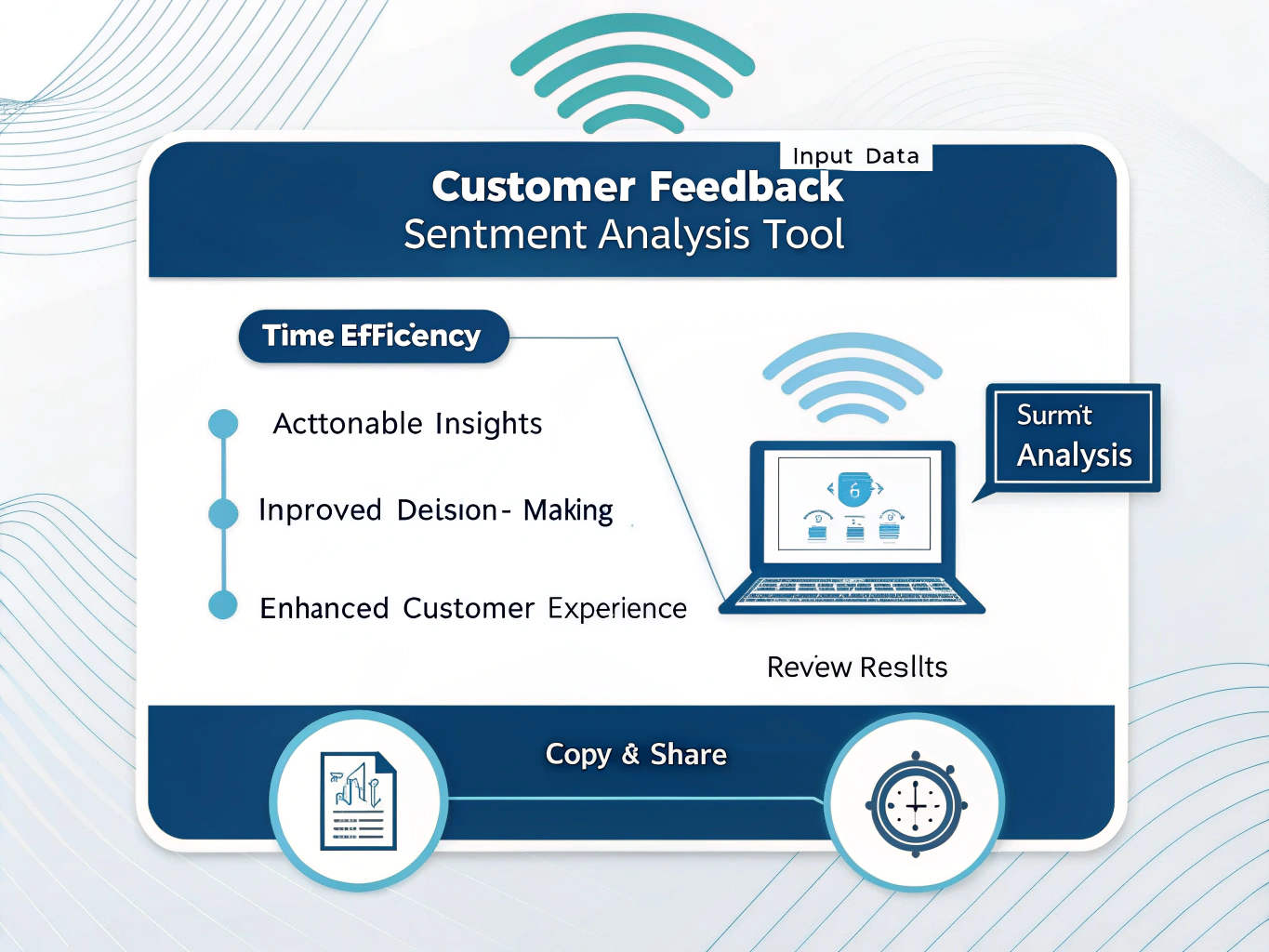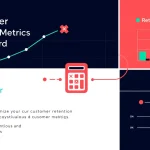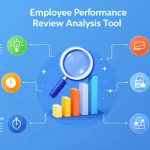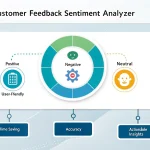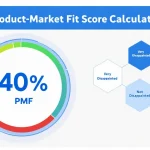Is this tool helpful?
How to Use the Tool Effectively
Step 1: Enter Your Customer Feedback Data
Paste the text you want to analyze into the Customer feedback data to be analyzed field. This text can include reviews, survey responses, support tickets, or any kind of customer comments. To get the best results, provide clear and focused feedback data.
- Sample Input 1: “The website navigation is smooth but the checkout process is confusing and needs improvement.”
- Sample Input 2: “Customer support quickly resolved my issue, though the response time was longer than expected.”
Step 2: Submit Your Feedback for Analysis
Click the Analyze Feedback button to send the data. The tool processes your input and identifies sentiments such as positive, negative, or neutral. This powerful sentiment analysis helps you understand customer opinions at a glance.
Step 3: Review the Sentiment Analysis Results
You will see a structured breakdown of the sentiments found in your feedback. This section highlights trends and pinpoints areas where your product or service excels or needs improvement. The clear layout makes it easy to digest insights quickly.
Step 4: Copy and Share Your Results
Use the Copy to Clipboard option to save the analysis. You can paste the results into reports, presentations, or emails to share insights with your team or stakeholders efficiently.
Introduction to the Customer Feedback Sentiment Analysis Tool
Understanding customer sentiment is essential for improving your products, services, and overall customer satisfaction. The Customer Feedback Sentiment Analysis Tool provides a straightforward way to evaluate emotions and opinions expressed in customer feedback. By analyzing text data, this tool reveals valuable insights that help you make informed decisions.
Whether you manage customer service, product development, marketing, or business strategy, this tool helps you save time by automating sentiment evaluation. It delivers consistent, accurate, and actionable feedback analysis without requiring specialized expertise.
Practical Applications of the Customer Feedback Sentiment Analysis Tool
Product Improvement and Development
Use the tool to review customer feedback about your products. Identify recurring complaints or praised features to guide your development priorities. For example, if multiple customers mention issues with app performance, you can focus your efforts on enhancing stability.
Enhancing Customer Service Quality
Analyze feedback on your customer support interactions. Detect patterns such as dissatisfaction with response times or positive remarks about helpful agents. Using this data, you can train your team or optimize processes to improve customer experience.
Evaluating Marketing Campaigns
Assess customer reactions to marketing efforts by analyzing comments and reviews gathered during campaigns. Sentiment analysis helps you understand how your messaging resonates and where adjustments may be necessary.
Key Benefits of Using This Sentiment Analysis Tool
- Saves Time: Automates the evaluation process, eliminating manual reading and interpretation.
- Provides Clear Insights: Clarifies customer sentiment and highlights important trends.
- Supports Decision-Making: Enables data-driven actions to improve products and services.
- Ensures Consistency: Removes human bias by using reliable algorithmic analysis.
- User-Friendly Interface: Simple to use for anyone, regardless of technical skill.
How This Tool Addresses Common Challenges
Managing Large Volumes of Feedback
You often receive too many comments to process manually. This tool simplifies analysis by quickly scanning all feedback and extracting meaningful sentiment data.
Extracting Actionable Insights
Raw feedback can be difficult to interpret. The tool categorizes feedback clearly into positive, neutral, and negative sentiments, helping you focus on relevant areas.
Eliminating Analysis Inconsistency
Human analysis can vary due to bias or fatigue. This tool uses consistent criteria, providing dependable results every time.
Frequently Asked Questions (FAQ)
What kinds of customer feedback can I analyze?
You can analyze any textual customer feedback, including online reviews, survey answers, email comments, or social media posts. The tool handles diverse formats as long as the input is in text form.
Is multilingual feedback supported?
Currently, the tool is optimized for English-language texts. Future updates may add additional language support.
How much feedback can I analyze at once?
The tool efficiently processes large batches, but for best performance, analyze feedback in manageable portions.
How fast does the analysis complete?
Analysis usually takes only a few seconds, depending on the size of your input.
Can I compare feedback about competitors?
Yes, if you have access to publicly available competitor feedback, you can analyze it to understand their strengths and weaknesses.
How do I save or share analysis results?
Use the copy feature to save results to your clipboard and paste them into documents, emails, or presentations for easy sharing.
Is this tool suitable for small business owners?
Absolutely. It is designed to be accessible and useful for businesses of all sizes, from startups to large enterprises.
Can I integrate this tool with other software platforms?
Currently, the tool functions as a standalone online application. Future versions may include integration with popular business tools.
Recommended Frequency for Feedback Analysis
Regularly analyzing customer feedback helps you stay updated on changing sentiment trends. Depending on your business needs, schedule analysis weekly, monthly, or quarterly to align with product updates, campaigns, or customer service initiatives.
Important Disclaimer
The calculations, results, and content provided by our tools are not guaranteed to be accurate, complete, or reliable. Users are responsible for verifying and interpreting the results. Our content and tools may contain errors, biases, or inconsistencies. Do not enter personal data, sensitive information, or personally identifiable information in our web forms or tools. Such data entry violates our terms of service and may result in unauthorized disclosure to third parties. We reserve the right to save inputs and outputs from our tools for the purposes of error debugging, bias identification, and performance improvement. External companies providing AI models used in our tools may also save and process data in accordance with their own policies. By using our tools, you consent to this data collection and processing. We reserve the right to limit the usage of our tools based on current usability factors.
